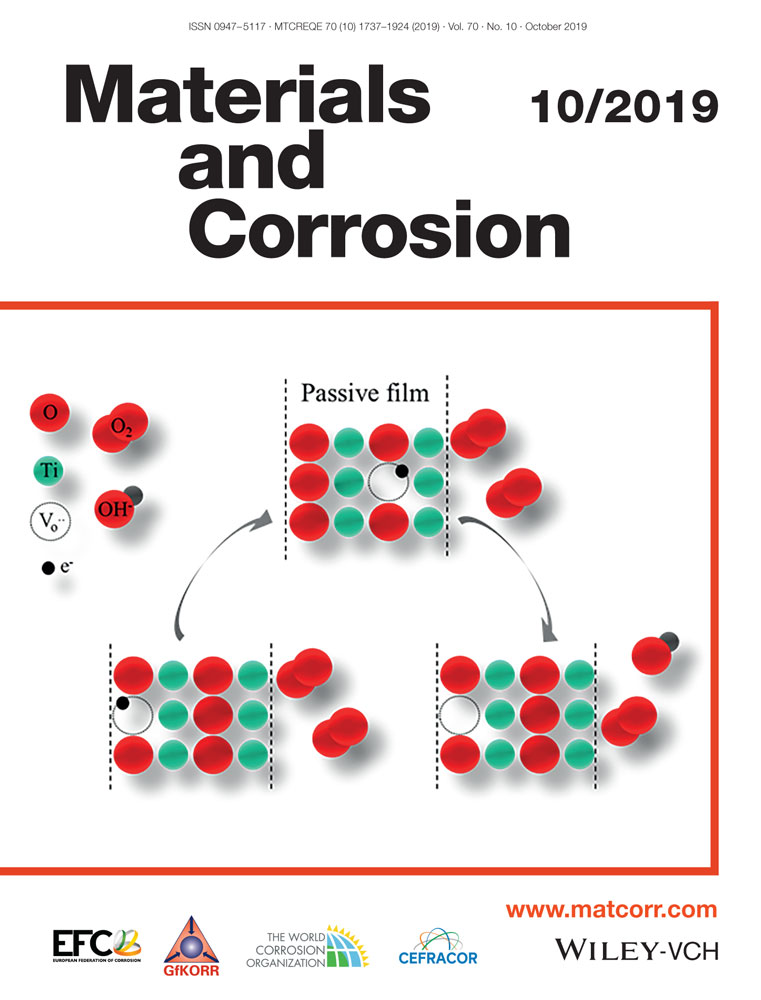Influence of grinding parameters on the corrosion behavior of austenitic stainless steel
Abstract
Samples of the austenitic stainless steel grade X5CrNi18-10 (1.4301, AISI 304) were ground industrially with various grinding parameters to study their influence on corrosion resistance. The ability of the mechanically ground surfaces to form a stable passive layer was evaluated by KorroPad test and a modified electrochemical potentiodynamic reactivation test based on a single loop (EPR-SL). Furthermore, the surfaces were characterized by surface analytical methods. The main influence was determined regarding abrasive belt type. Surfaces mechanically ground with granulate abrasive belts constantly had a lower corrosion resistance than surfaces ground with single-coated grain. The granulate abrasive belts generated more sensitized surface areas and left formations of welded sample material on the mechanically ground surfaces. A post-treatment with a nonwoven abrasive proved to be an effective finishing process by which the surface defects and sensitized material got removed and the surfaces regained the expected corrosion resistance.




